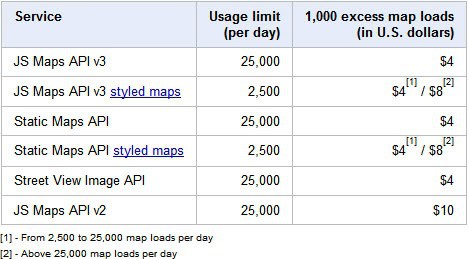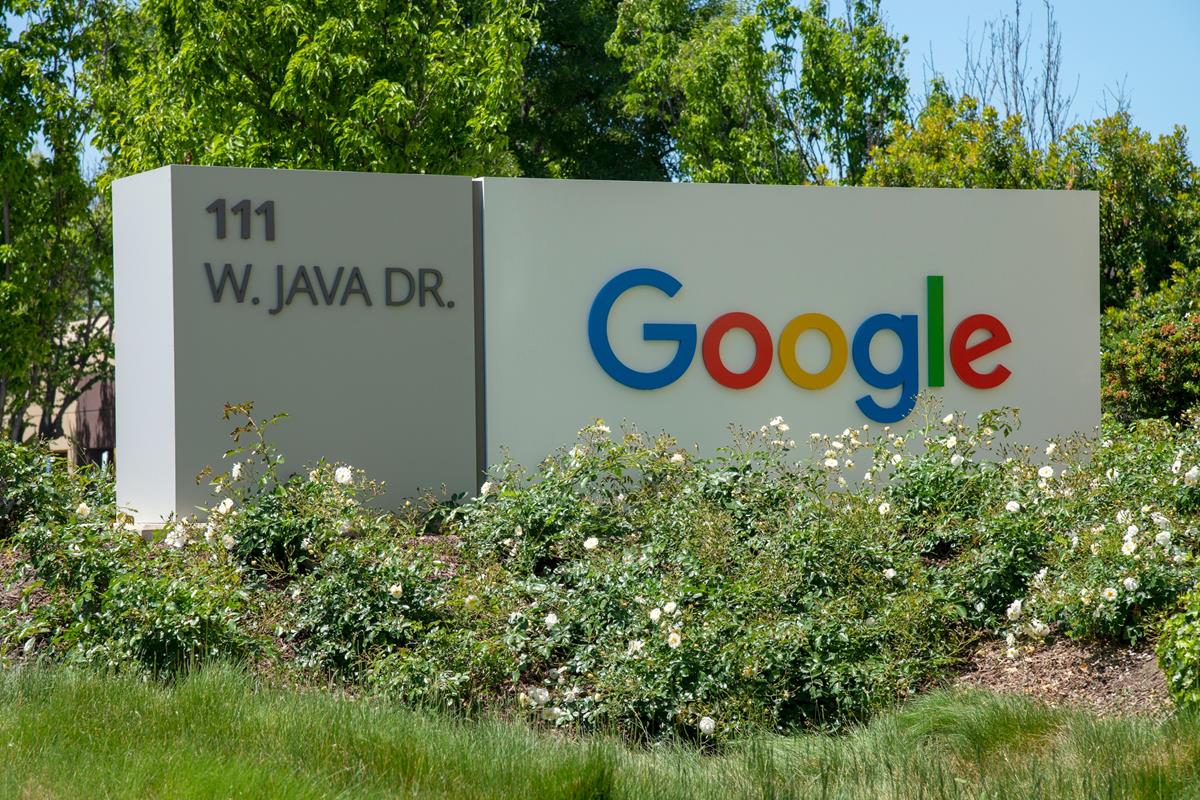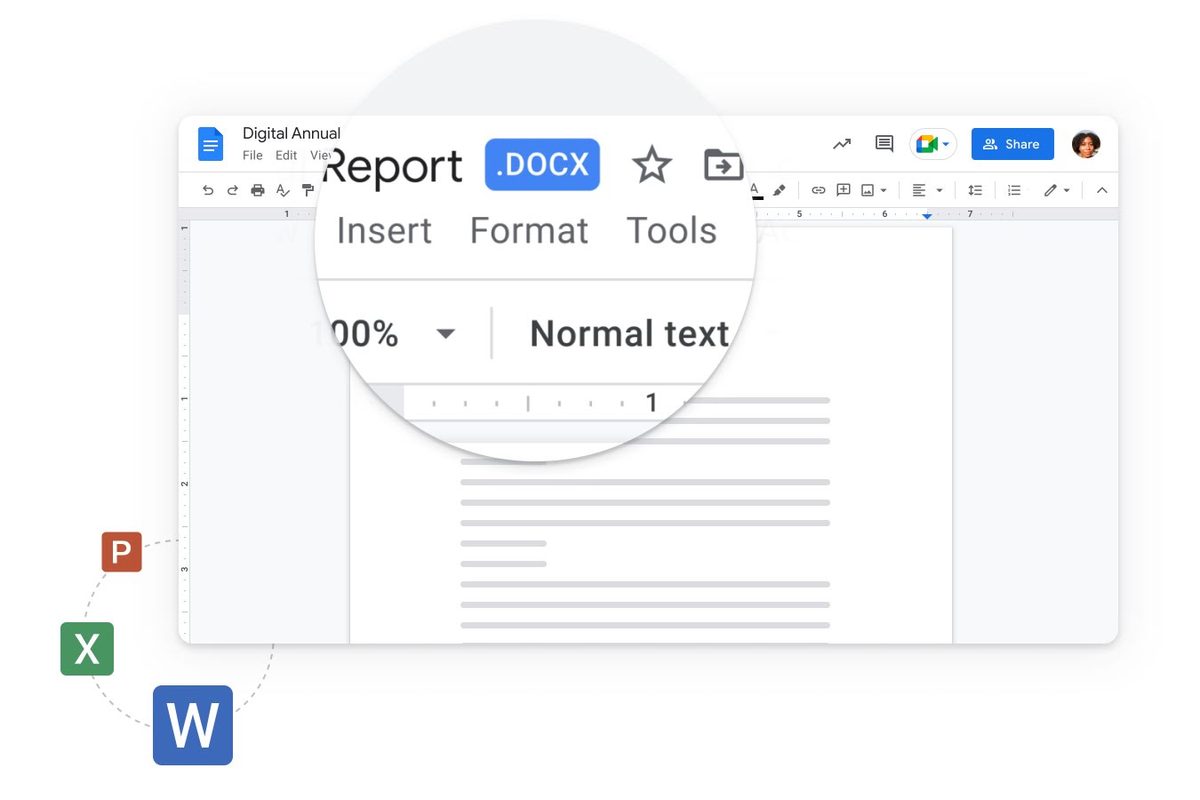Google Introduces Google Maps Api Limits

Google, the company that conquered the Internet by storm by offering mostly free services is slowly being turned around to make even more money than it is currently. One of the latest strikes in the hearts of Google advocates is the introduction of Google Maps Api access limits. What does that mean?
Well it basically means that third parties who use Google Maps Api for services on the Internet will have to pay or stop offering those services once they reach the limit. While that may not be a problem for big companies, it certainly could feel like a blow to the head for free Google Maps services on the Internet.
Lets take a look at the limitations. The price for excess map loads varies from $4 to $10 per 1000 map loads once the limit is reached. The daily limit according to the Google Maps FAQ may begin by 2500 map loads or 25000 map loads depending on the Maps Api used.
While it is unlikely that a small site will hit those usage limits, a popular third party service using the Apis of Google Maps might very well.
According to Google, developers then have three options to deal with the issue. They first can pay for the excess usage, second try to limit their usage below the limits and third purchase a maps Api premier license (fourth stop offering their services, fifths switch to another Maps provider). A purchase price is not revealed on the web, and interesting developers are asked to contact a Google sales representative.
For very popular sites Maps API Premier is likely to be a more cost effective option. It also offers a number of additional benefits, including terms that permit for-fee and internal use, enterprise technical support, a Service Level Agreement, fixed and invoiced annual pricing, and increased quotas for the Maps API Web Services.
Google notes that site exceeding the daily limitations will not stop working immediately (what they mean is the Google Maps part of those sites). Google will start enforcing the new Google Maps Api limits in early 2012.
Google's motivation to introduce usage limits is to ensure "that even when used by the highest volume for-profit sites, the service remains viable" and to ensure "that Google can continue to offer the Maps API for free to the vast majority of developers for many years to come".
So what is likely going to happen? The majority of sites and developers won't probably notice any difference thanks to the the free map load quota. Some developers on the other hand, those running free and highly popular maps powered services, will be forced into a decision that they probably do not want to make. Some may discontinue their services, others may switch to Bing Maps, and a few may turn their services into commercial services to pay for maps access.
What's your take on the new Google Maps Api usage limitations and Google's drive to turn their free services into commercial ones? Lets discuss it in the comments.





















With the recent bout of earthquakes in New Zealand, the only way of keeping an eye on what has been happening and where, has been through Web. This has been especially useful when your both your better half and friends are in Christchurch and you are the other side of the Tasman Sea. I don’t know what the peak usage of the two main earthquake map sites has been, but I suspect it would have been significant after each the major destructive aftershocks. Whilst the technical data on each earthquake is useful, you really need to see the plot on a map to work out what is happening.
The two sites of interest are
http://www.canterburyquakelive.co.nz/
http://www.christchurchquakemap.co.nz/
both of which I note use the Google API to display their data. O course it may be possible to re-write the sites so they don’t constantly access the Google Map Data, but I think Google charging any fee for the provision of this service would be reprehensible.
Aren’t these the people who drove around and invaded everyone’s privacy by filming the streetscapes some time ago. An attempt to charge for the provision of map data, especially to sites such as the above, should be looked at officially by the relevant regulalting authorities. Some companies and people seems to want to make too much money from the Web especially at the expense of any ethical consideration
Michael
I personally think that Google should offer the service for free for non-profit organizations and educational institutions like Bing does.
Bing Maps have the same “limitation”.
Most sites with more than 25K (Google Map) views probably earn a few $$, so I don’t really thing it’s a “bad” thing. At most, some developers will probably code their site better, sÃ¥ every viewer doesn’t have to reload the google maps applet/frame for every page change.
Just checked: Bing Maps Api access is free for non-profit organizations and educational institutes. See here: http://www.microsoft.com/maps/product/licensing_for_nonprofit.aspx
Boof, the Translate paywall was bad enough….I wonder if there will be anyone left wanting to use google services in apps after a while.